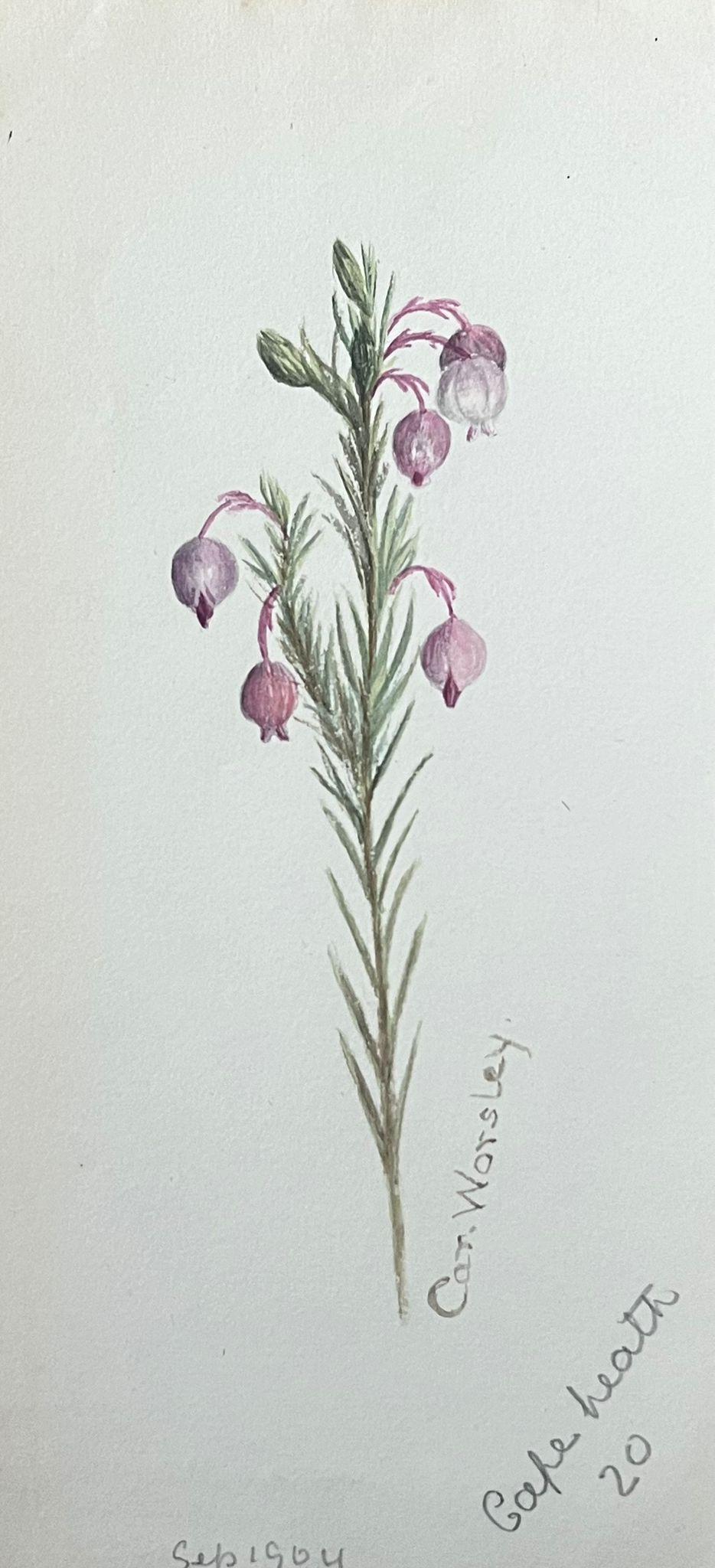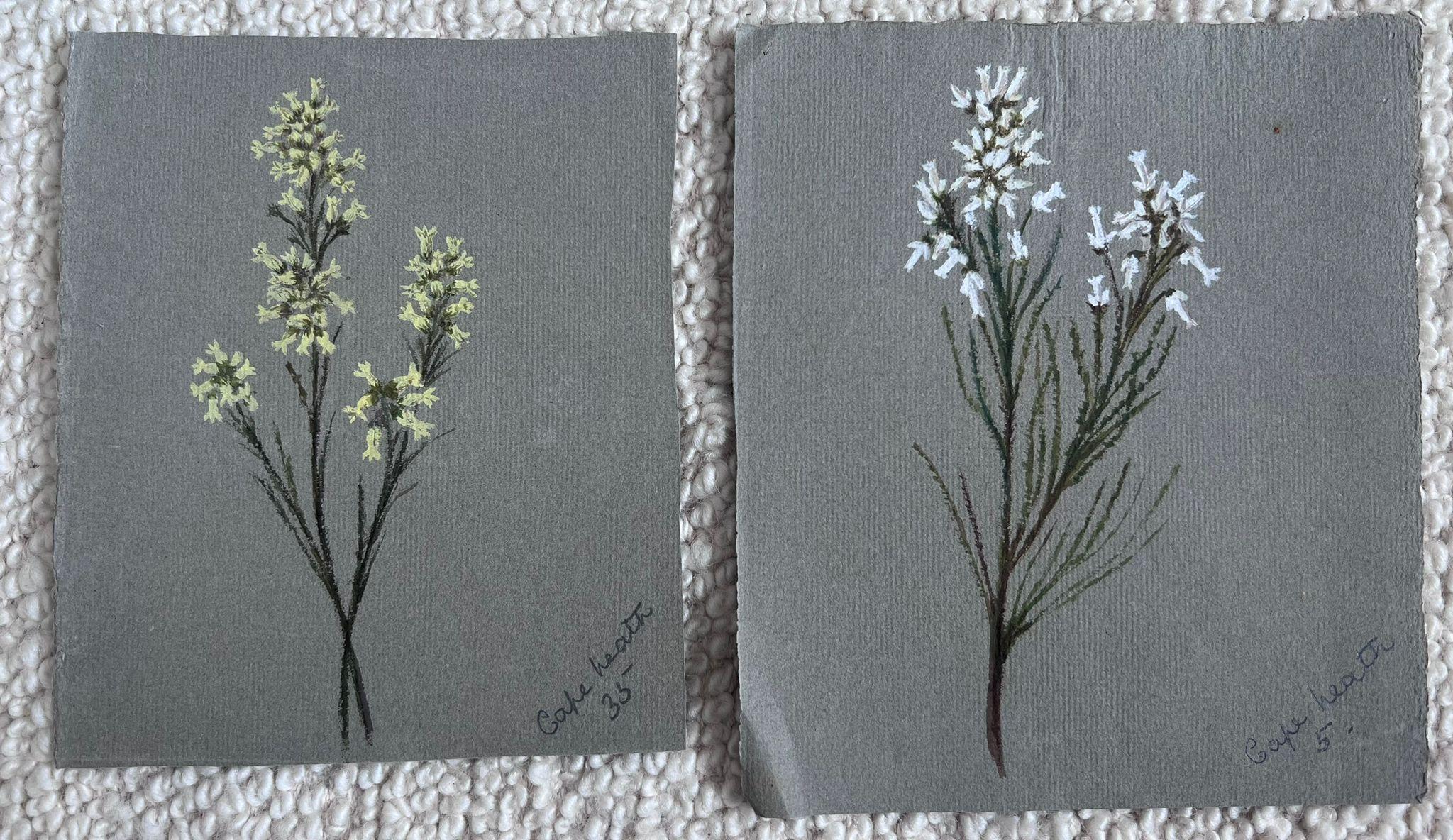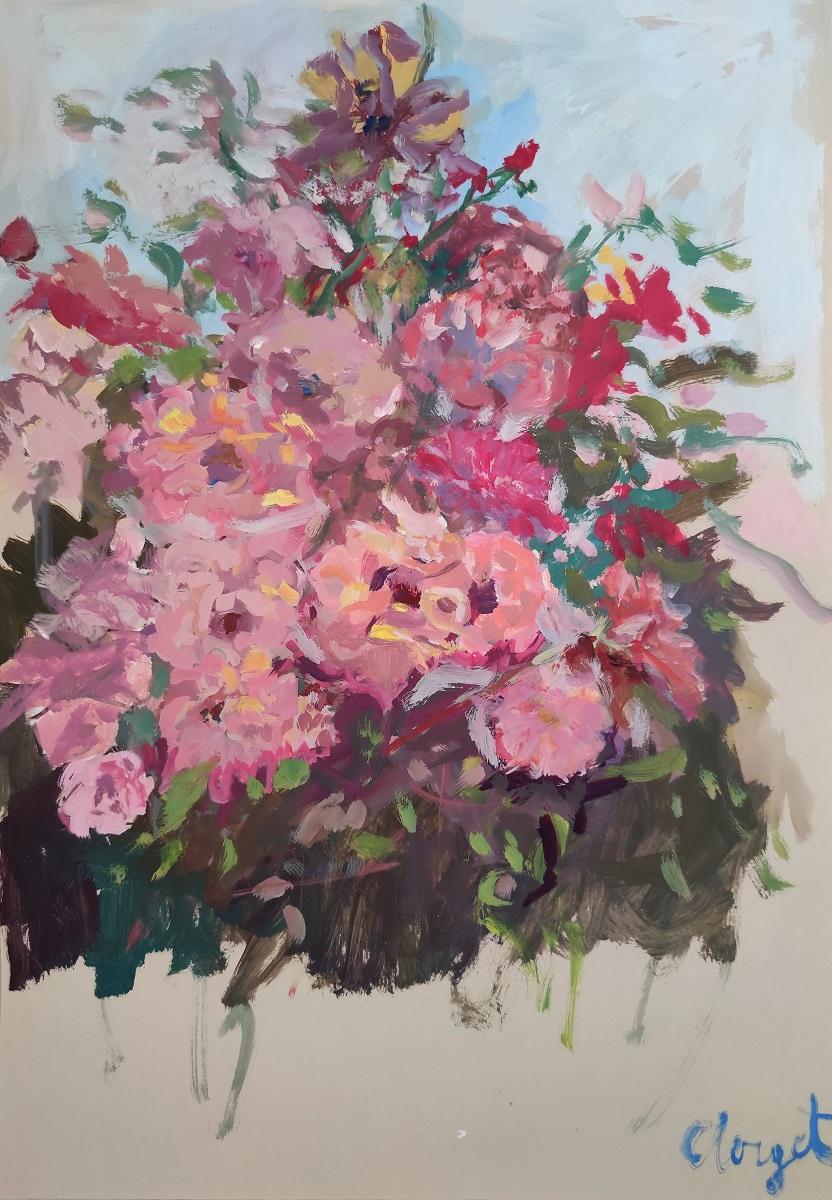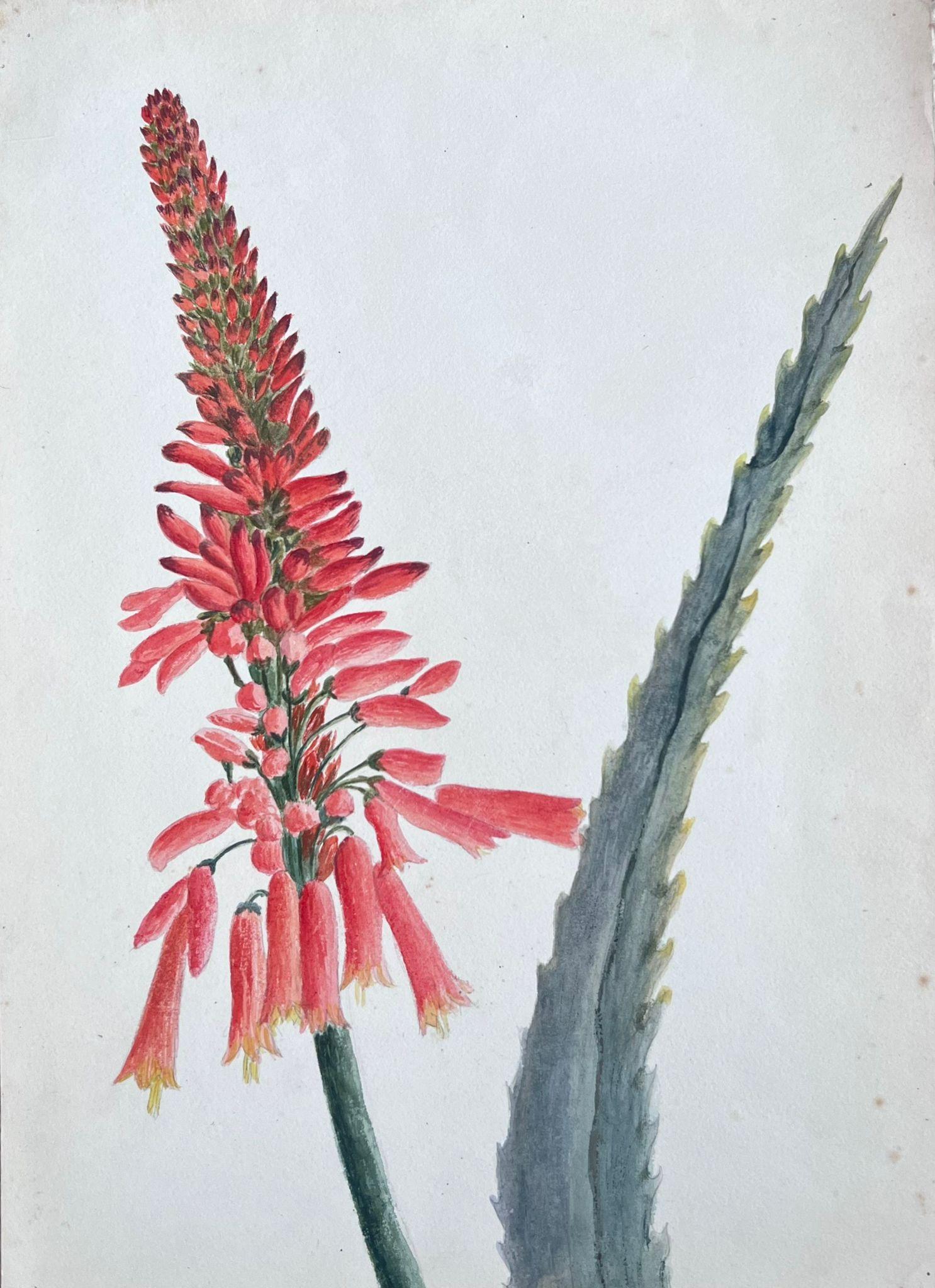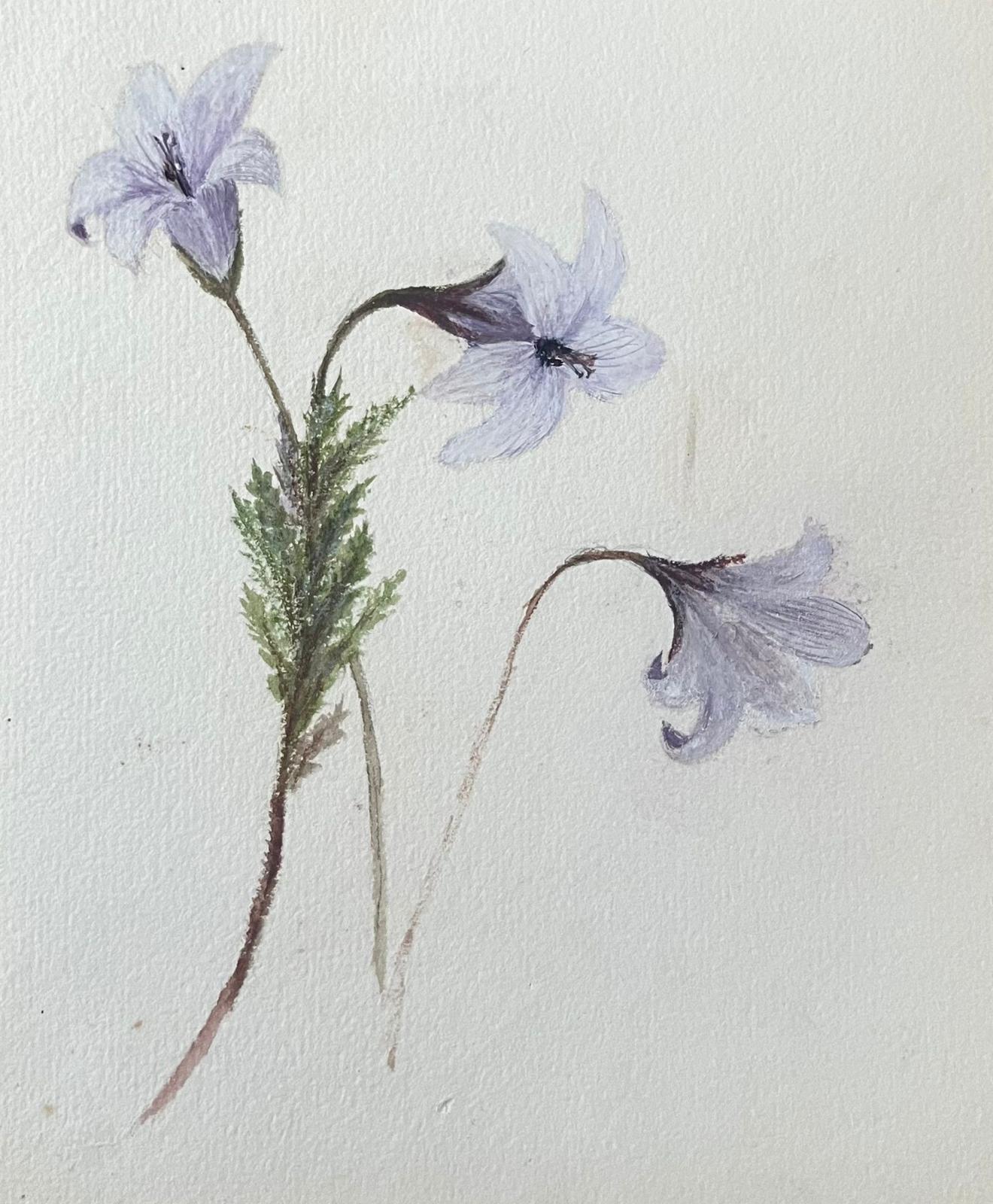Items Similar to Augustus Morton Hely-Smith RBA - Early 20th Century Watercolour, Roses in a Jug
Want more images or videos?
Request additional images or videos from the seller
1 of 8
UnknownAugustus Morton Hely-Smith RBA - Early 20th Century Watercolour, Roses in a JugUnknown
Unknown
About the Item
A delicate watercolour with an impressive sense of realist detail and careful composition by the accomplished and well-established artist Augustus Morton Hely-Smith RBA (1862-1941). Slightly dulled red roses are depicted in an earthenware jug, with a cloth background in the traditional style. The artist's adept proficiency in the medium in clear. Handsomely presented in a washline mount and distressed gilt wooden moulded frame, as shown. Signed and incsribed on the reverse. On watercolour paper.
- Creation Year:Unknown
- Dimensions:Height: 20.36 in (51.7 cm)Width: 17.17 in (43.6 cm)
- Medium:
- Period:
- Condition:In very good condition overall. There is some very light surface dirt to the mount, and minor scuffing to the frame.
- Gallery Location:Corsham, GB
- Reference Number:Seller: kp5741stDibs: LU88137965142
About the Seller
4.9
Platinum Seller
These expertly vetted sellers are 1stDibs' most experienced sellers and are rated highest by our customers.
Established in 2010
1stDibs seller since 2018
861 sales on 1stDibs
Typical response time: 5 hours
- ShippingRetrieving quote...Ships From: Corsham, United Kingdom
- Return PolicyA return for this item may be initiated within 30 days of delivery.
Auctions on 1stDibs
Our timed auctions are an opportunity to bid on extraordinary design. We do not charge a Buyer's Premium and shipping is facilitated by 1stDibs and/or the seller. Plus, all auction purchases are covered by our comprehensive Buyer Protection. Learn More
More From This SellerView All
- Framed Mid 20th Century Watercolour - Still Life of DaisiesLocated in Corsham, GBA mid-century watercolour of white daisies in a terracotta jug. Presented in a contemporary wood veneer frame with card mount. Unsigned. On watercolour paper.Category
20th Century Still-life Drawings and Watercolors
MaterialsWatercolor
- David Wood (1933-1996) - 20th Century Watercolour, Lunch in the CourtyardLocated in Corsham, GBA charming depiction of a quaint courtyard with a table set up for two. In the doorway a two cats look over the sunny patio. Signed to the lower right. Presented in a light wooden fr...Category
20th Century Still-life Drawings and Watercolors
MaterialsWatercolor
- Mary Brown - 20th Century Gouache, Spring FlowersLocated in Corsham, GBA pretty floral study showing an array of Spring flowers, including snowdrops, catkins and English ivy. The artist has signed to the lower edge and the painting has been presented in...Category
21st Century and Contemporary Still-life Drawings and Watercolors
MaterialsGouache
- Kate Weaver - 1987 Watercolour, Comma Butterflies and GrassLocated in Corsham, GBA very fine, delicate and detailed watercolour painting with pencil and gum arabic. The scene depicts two Comma butterflies flying over tall grass. Monogrammed and dated to the lower...Category
20th Century Still-life Drawings and Watercolors
MaterialsWatercolor
- E.H. - Late 19th Century Watercolour, Still Life with Grapes and PumpkinLocated in Corsham, GBA fine and detailed watercolour painting, depicting a still life composition with several fruits, nuts, a pumpkin and a white jar. Monogrammed to the lower right-hand corner. Well-pr...Category
19th Century Still-life Drawings and Watercolors
MaterialsWatercolor
- Late 19th Century Watercolour - Blooms and ButterflyLocated in Corsham, GBAn oval still life depicting a vase full of flowers with a butterfly perched on a leaf in the lower register of the composition. Presented glazed in a ...Category
19th Century Still-life Drawings and Watercolors
MaterialsWatercolor
You May Also Like
- Garden FlowersBy Charles DemuthLocated in New York, NYCharles Demuth was one of the most complex, talented, and deeply sensitive artists of the American modern period. Whether he was painting floral still lifes, industrial landscapes, or Turkish bathhouses, art was, for Demuth, fraught with personal meaning. A fixture of the vanguard art scene in New York, Demuth navigated the currents of Modernism, producing some of the most exquisite watercolors and original oil paintings in twentieth-century American art. Demuth was born in Lancaster, Pennsylvania, the only child of a well-to-do family. He had an awkward and introverted childhood shaped by a childhood illness, Perthes, a disease of the hip that not only left him permanently lame, but, as part of the “cure,” bedridden for two years in the care of his mother. This long period of incapacitation had a deep impact on Demuth, who came to see himself as an invalid, an outsider who was different from everyone else. It was perhaps during this period of indoor confinement that his keen interest in art developed. Several relatives on his father’s side had been amateur artists, and, following his convalescence, his mother encouraged his artistic pursuits by sending him to a local painter for instruction. The majority of his early pictures are of flowers, a subject for which Demuth maintained a lifelong passion. Following high school, Demuth enrolled at the Drexel Institute of Art in Philadelphia, a school renowned for its commercial arts program. He advanced through the program rapidly, and, in 1905, at the encouragement of his instructors, he began taking courses at the Pennsylvania Academy of the Fine Arts. The two leading teachers then at the Academy were William Merritt Chase and Thomas Anshutz. Anshutz, himself a former student of Thomas Eakins, was well liked by his students, and is best known as the teacher of Robert Henri, John Sloan, and several of the other artists of the Ashcan School. Demuth, too, adopted a similar idiom, working in a controlled, realistic manner while at the Academy, where he remained until 1910. In 1907, Demuth made his first trip to Europe, staying in Paris. He spent time on the periphery of the art scene composed of the numerous American artists there, including John Marin and Edward Steichen. He returned to Philadelphia five months later, and immediately resumed courses at the Academy. Despite his introduction to advanced modern styles in Europe, Demuth’s work of this period retains the academic style he practiced before the trip. It wasn’t until he had summered at New Hope, Pennsylvania, in 1908 and 1911, that his style began to evolve. New Hope was a prominent American Impressionist art colony whose members were largely affiliated with the Pennsylvania Academy. Demuth dropped the conservative tone of his style and adopted a freer and more colorful palette. Although he remained based in Philadelphia, Demuth frequently went to New York during this period. Many of the same American artists of the Parisian art scene Demuth had encountered on his earlier European trip now formed the nucleus of New York’s avant-garde, which centered around Alfred Stieglitz’s 291 gallery. It wasn’t long before Demuth began to apply modernist-inspired strategies to his work. He was particularly influenced by the watercolor work of John Marin, also a former student of Anshutz, whose bold use of color in the medium Demuth freely adapted into looser washes of color. In 1912, Demuth again left for Paris, this time studying in the Académie Moderne, Académie Colorossi, and Académie Julian. In Paris Demuth met the American modernist Marsden Hartley. Hartley, a principal figure in the expatriate art circle, acted as a mentor to Demuth, and introduced him to the wide array of modern styles currently practiced in Europe. Hartley also introduced Demuth to many of the members of the Parisian avant-garde, including Gertrude Stein. Demuth was an aspiring writer, and he spent many hours in conversation with Stein. He wrote extensively during this period, and published two works shortly after his return to America. He also developed an interest in illustrating scenes from literary texts. From 1914 to 1919, Demuth produced a series of watercolors of scenes from books such as Emile Zola’s Nana and Henry James’s The Turn of the Screw. Upon his return to America, Demuth settled in New York. In 1914, Demuth had his first one-man show at Charles Daniel’s gallery, which promoted emerging modern American artists, including Man Ray, Rockwell Kent, Yasuo Kuniyoshi, Stuart Davis, and Max Weber. Demuth drew closer to the artistic vanguard in New York, becoming friends with many in the Stieglitz and Daniel circles, including Georgia O’Keeffe, Marcel Duchamp, Carl Van Vechten, and Edward Fiske. New York’s cosmopolitan atmosphere and active nightlife appealed greatly to Demuth. In a sketchy style well suited to watercolor, he painted many vaudeville and circus themes, as well as nightclub, café, and bathhouse scenes. Often with Duchamp, Demuth took part in an urban subculture replete with nightclubs, bars, drugs, and sexual permissiveness, which, for a homosexual artist like himself, allowed room for previously unattainable personal expression. Demuth’s pictures of sailors, bathhouses, and circus performers embody a sensual and sexual undercurrent, expressing the artist’s sense of comfort and belonging in the bohemian subculture of New York. Simultaneously, Demuth deepened his interest in floral pictures, painting these almost exclusively in watercolor. His style evolved from the broad color washes of his earlier pictures to more spare, flattened, and sinuous compositions, inspired by the drawings of Aubrey Beardsley and other artists of the Aesthetic Movement. Demuth’s flower watercolors are moody and atmospheric, sensuous and elegant, introspective and yet full of expressive power. Moreover they are beautiful, and are unequivocally among the finest still lifes in American art. Despite numerous subsequent artistic undertakings that led him in a variety of directions, Demuth never stopped painting flower pictures, ultimately adding fruits and other still-life objects to his repertoire. In 1916, Demuth began to develop a style later known as Precisionism, a form of landscape painting infused with Cubism, in which space is divided into precisely drawn geometric regions of color. Demuth first began to paint the landscape in an appropriated Cubist mode while on a trip with Hartley to Bermuda. In these early landscapes, in which the curvilinear forms of trees intersect the geometrically articulated architectural forms, Demuth explored ideas that shaped the future development of modernism in America. The full realization of Demuth’s explorations came after his return to America in 1917, when he turned his attention to industrial subjects. These works derive from a “machine aesthetic,” espoused by New York artists such as Francis Picabia, Joseph Stella, Albert Gleizes, and Duchamp, by which artists viewed machines as embodying mystical, almost religious significance as symbols of the modern world. Rather than painting the skyscrapers and bridges of New York as did most of his like-minded contemporaries, Demuth returned to his home town of Lancaster, where he painted factories and warehouses in a Precisionist idiom. The titles for these pictures are often contain literary references, which serve as clues for the viewer to aid in the decoding of the artist’s meaning. In 1923, Demuth planned a series of abstract “poster portraits” of his friends and contemporaries in the New York art and literary scene. In these “portraits,” Demuth combined text and symbolic elements to evoke the essential nature of his sitters’ distinguishing characteristics. In this fashion, he painted portraits of such artists as Georgia O’Keeffe, John Marin, and Arthur Dove. His most famous poster portrait, I Saw the Figure 5 in Gold...Category
20th Century American Modern Still-life Drawings and Watercolors
MaterialsPaper, Watercolor
- STILL LIFE WITH BOWL OF FRUIT AND PITCHERBy Ben-Zion WeinmanLocated in Portland, MEBen-Zion. STILL LIFE WITH BOWL OF FRUIT AND PITCHER. Watercolor on paper. Signed within the image, right. 2 3/8 x 3 3/4 inches. In excellent c...Category
Mid-20th Century Still-life Drawings and Watercolors
MaterialsWatercolor
- Mantel ClockLocated in Houston, TXFrench watercolor and pencil of ornate clock, circa 1930. Original artwork on paper displayed on a white mat with a gold border. Archival plastic sleev...Category
1930s Still-life Drawings and Watercolors
MaterialsPencil, Watercolor
- Swim, Summer Fresh Painting on Paper, Word Art Pastel Tones Typography in PurpleBy Ryan RivadeneyraLocated in Barcelona, ES"Swim is a hand-painted acrylic painting on high-quality 300g paper by artist Ryan Rivadeneyra. The hand-drawn render is reminiscent and inspired by the word art that Ed Ruscha produ...Category
2010s Pop Art Still-life Drawings and Watercolors
MaterialsInk, Archival Ink, Sumi Ink, Watercolor, Archival Paper, Acrylic
- Watercolor on Paper Painting, by Charles Burchfield, 1919Located in New York, NYCharles Burchfield 1893-1967 Trilliums and Rock Ledge, 1919 Gouache and watercolor on paper Provenance: The artist until at least 1963 Private collection, New York Private Collectio...Category
1910s Landscape Drawings and Watercolors
MaterialsWatercolor, Gouache
- Grand Bouquet Et Fruits Devant La Fenêtre À Paris By Marc ChagallBy Marc ChagallLocated in New Orleans, LAMarc Chagall 1887-1985 Russian Grand bouquet et fruits devant la fenêtre à Paris (Large bouquet and fruits in front of the window in Paris) Stamped with signature “Marc Chagall" (...Category
20th Century Post-Impressionist Still-life Drawings and Watercolors
MaterialsPaper, Pastel, Gouache

